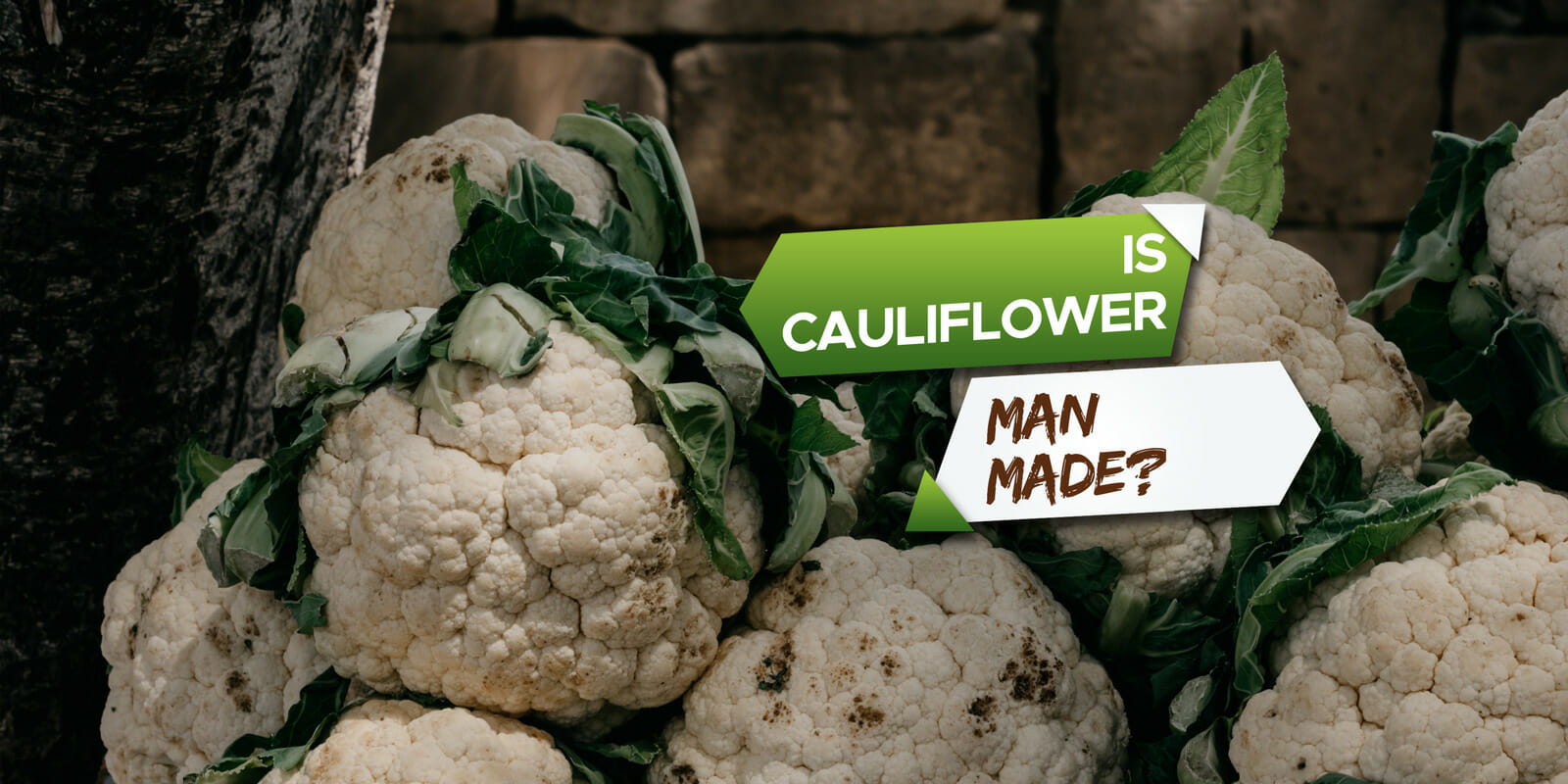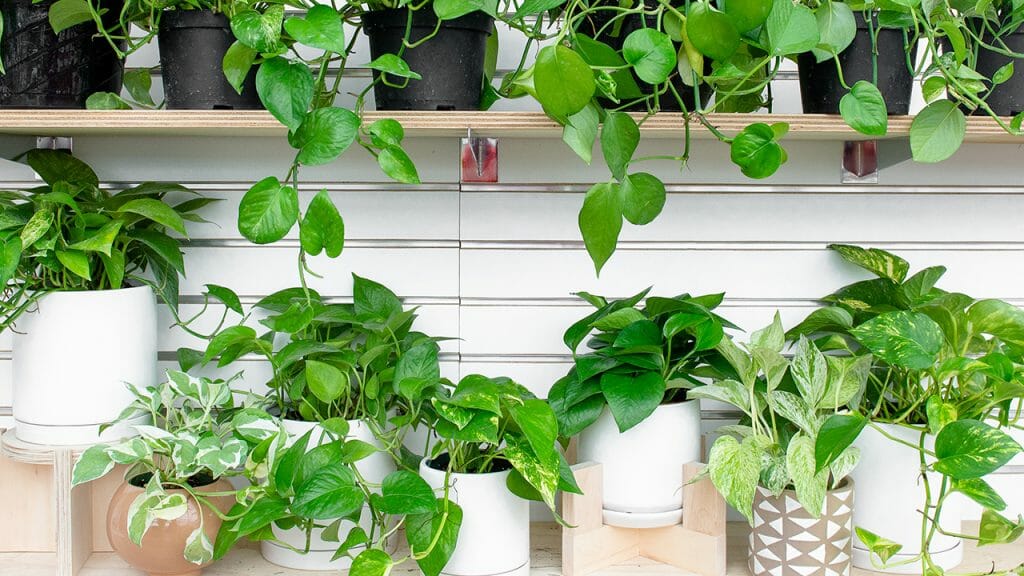Cauliflower is a vegetable that has probably graced all of our dinner tables at some point. It’s a strange-looking vegetable that looks out of this world but have you ever wondered about its origins?
After some research, we discovered that cauliflowers can’t be found in the wild, which got us thinking; is cauliflower man-made?
Is cauliflower man made? Well, cauliflower is actually a hybrid food, which means it is man-made. It has been cultivated across the world since the 1500s, when it was created using wild cabbage.
Hybrid vegetables have been around for hundreds of years and have worked their way into our everyday diets so that we are none the wiser. Cauliflower is just one of these unassuming but impressive vegetables that have their origin in the botanical science of our ancestors.
In this article, we are going to figure out, once and for all, if cauliflower is really man-made and explain precisely how these delicious vegetables came to be.
What is Cauliflower?
Before we figure out its origins, we need to get to know cauliflower a little bit better.
Let’s take a quick look at some of the scientific details:
| Specifications | |
| Family | Brassicaceae |
| Genus | Brassica |
| Species | Brassica oleracea |
| Type | Annual |
| Cultivar | Cauliflower |
Keep these family names in mind; they’ll be important later.
Cauliflower is native to the Mediterranean and Western Europe, where it has been cultivated since the 1500s, but it only made its way to the US in the 1900s. The word cauliflower comes from the Italian cavolfiore, meaning cabbage flower.
The name came about as a reference to the head of the cauliflower, which is actually a cluster of immature buds. The white ‘curd’ is protected from the sun by the curling leaves, which preserves the white color. They are also cruciferous vegetables because they have four leaves and buds in the shape of the Greek cross.
Although most cauliflower is white, there are also yellow and purple varieties.
This classic vegetable is delicious as a side, steamed, or served with a sauce. It can also form part of a stirfry or pan-fried like a steak. It became very popular when the banting diet came into the public eye since it was used to replace other foods in the form of cauliflower mash and cauliflower rice.
Is Cauliflower Man Made?
As wild as this may seem, cauliflowers are a hybrid food, which means it is man-made.
So what does this mean exactly?
Hybrid foods are those that have been selectively cross-bred to maximize the desirable elements of a plant to create something new. They cannot be found in nature in their hybrid form. There are many reasons and benefits to creating food in this way, including increasing the yield, breeding out unfavorable characteristics, and making the vegetable easier to cultivate on a large scale.
Cauliflower is a domesticated plant created from the ancestral species; wild cabbage, also known as wild mustard. This original plant was selectively bred in the 1500s to develop the group of vegetables that fall under the brassica oleracea family. This family is responsible for many of the vegetables that are readily available to us today.
It’s incredible to think that, with science and technology in their infancy, people still managed to create new plants to eat out of the simple wild cabbage.
What Other Vegetables Were Domesticated From Wild Cabbage?
As we now know, wild cabbage or wild mustard is the origin of our beloved cauliflower, but what other vegetables started their lives as this unassuming plant?
Some of these are very similar to cauliflower, but others may surprise you.
Other vegetables that were bred from wild cabbage include:
- Broccoli
- Brussel sprouts
- Cabbage
- Collard greens
- Kale
As you can see from this list, hybrid foods are responsible for the creation of some of our favorite vegetables. It’s almost unbelievable that the same plant that created the leafy greens like kale also, somehow, made the dense white cauliflower.
What is the Difference Between Hybrid and GMO?
At first, glance, making hybrid plants and GMOs might seem similar, but there are some key differences.
As we have already discussed, hybrid plants are those created by crossing breeding to bring out desirable qualities. This cross-breeding occurs using natural and controlled pollination to breed new, more desirable generations of plants.
GMOs, as the name suggests, are foods that are manipulated using genetically modified organism technology. This intervention is done in a lab rather than out in nature. The main aim of GMOs is to produce a plant with a significantly higher yield.
While hybridization has been around for a very long time, GMOs are relatively new. The fact that they are created in a lab setting has led many people to question the safety of GMO crops, an element that has to be assessed on an individual plant level. Hybrid plants, however, are created in a natural way, which makes their safety clear.
Frequently Asked Questions:
Are carrots man-made?
Yes! Carrots are yet another vegetable that is a hybrid.
The vegetables they were initially created from were much longer and thinner, but through selective breeding, we now have the thick, orange carrots that we are all familiar with. This hybridization created a crop that is more robust and easy to cultivate.
They have also been bred in different colors like purple and white.
Is lettuce man-made?
Lettuce is yet another hybrid vegetable that all of us probably have in our fridges.
This leafy green was selectively bred by the Ancient Egyptians and the wide varieties that can be found today are all offshoots of this hybridization.
Why does my stomach hurt after eating cauliflower?
I’m sure many of you have experienced this after eating a little too much cauliflower.
This discomfort and gassiness are down to the fiber content of this vegetable, a problem you may also have with broccoli. We suggest eating it in small helpings if this occurs and drinking plenty of water to help with digestion.
Conclusion
Well, did you expect that crazy outcome when you first started reading? No, we didn’t think so.
As we now know, cauliflower is a man-made vegetable that was created in the 1500s and spread across the world. This doesn’t make this great vegetable any less nutritious; it just means that it was designed with care and has an interesting history.
We hope this has given you a fun anecdote to share the next time you share a meal featuring cauliflower.





